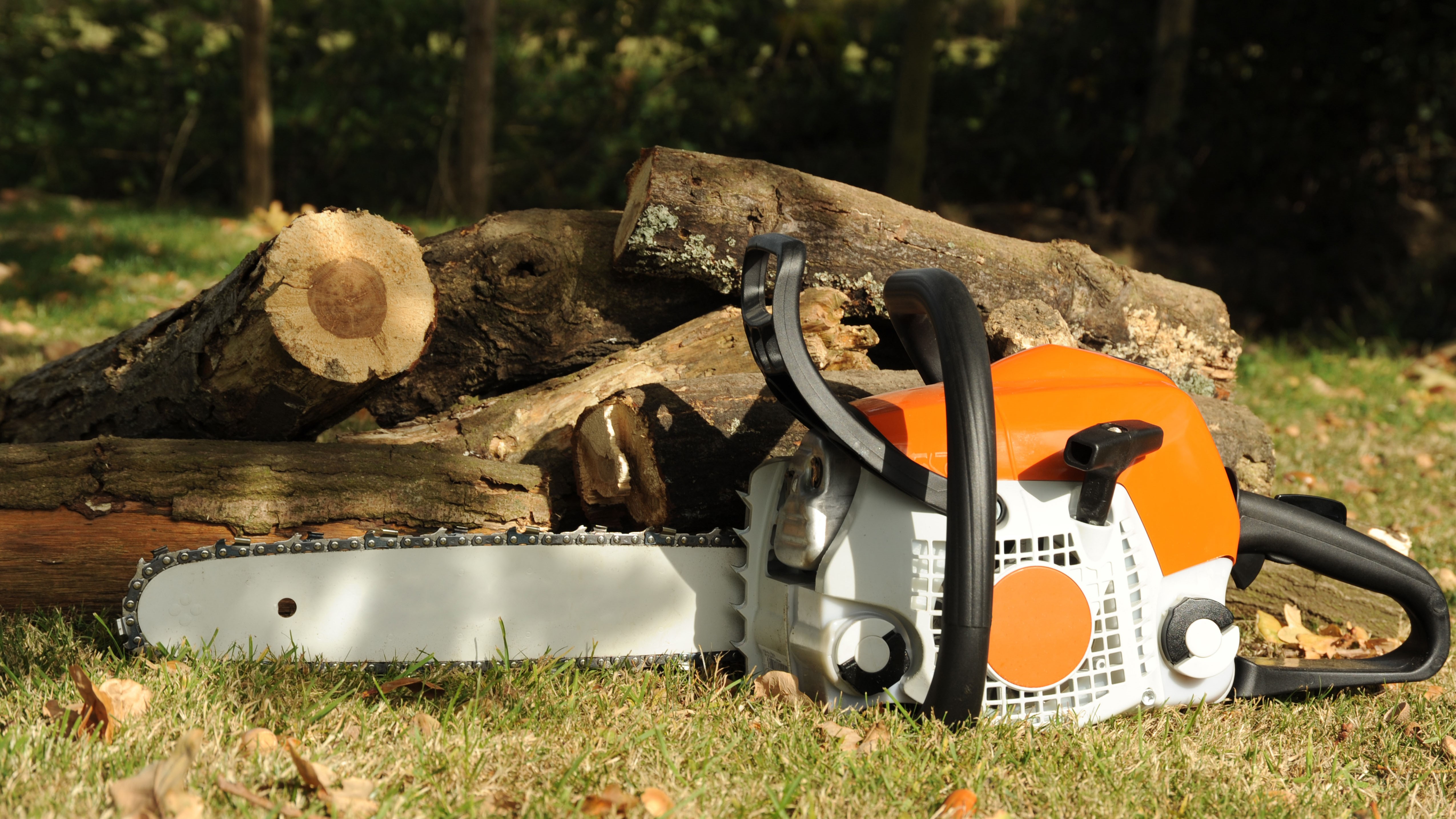
A new chainsaw could make a powerful addition to your collection of yard equipment. These tools can be used to cut firewood or slice off tree branches – and if you’re a trained arborist, you could even use a chainsaw to fell trees or cut large tree limbs.
The best chainsaws come in many different types and sizes, so it’s important to consider your options carefully before you buy a specific model. This article will take you through all the key factors you need to think about, from the weight and grade of the chainsaw, to more technical aspects such as the power source and power-to-weight ratio.
Helping us along the way is professional arborist, Joe Hardacre, whose expert advice features throughout this article. Before we start talking you through your chainsaw selection criteria, Joe has some advice on safety and proper usage, which will help you decide whether a chainsaw is the right tool for you in the first place.
“Chainsaws are a potentially dangerous tool and should be respected. Cutting firewood or small-scale cutting back is generally okay to do yourself, but before doing any work to trees you should seek advice from an arborist, especially when work at height is involved. Tree work [which involves climbing trees] should only be done by suitably qualified, experienced and insured arborists.”
If you’ve already bought a chainsaw and mastered the basics of cutting technique, Joe has the following advice to add:
“The user should make sure they are holding the saw firmly with both hands, and that they have good balance and footing.
“Also, avoid using the top side of the nose of the bar, which is referred to as the ‘kickback zone’. Sawing with this part can make the chainsaw shoot backwards towards the operator suddenly and without warning. And finally, check all the chainsaws safety features are working properly and that the tool is well maintained, before use,” he says.
Of course, you’ll also need to read the tool’s manual, follow the instructions, and put on appropriate PPE, before you start sawing.
How to choose a chainsaw
1. Chainsaw type
For users who will be tackling a variety of tasks with their chainsaw, an ‘all-purpose’ model (Amazon) will usually be the most suitable choice. This is essentially the default type of chainsaw – so you won’t necessarily see the term ‘all-purpose’ in the product description.
If you’re looking to do specialized work, however, then there may be an alternative type of chainsaw that’s better suited to the task. For instance, electric pole saws (Amazon) have a bar-and-chain cutting head mounted on the end of a long pole – a design that’s perfectly suited to cutting fairly high-up branches, while your feet stay on the ground.
Other types of chainsaw include mini chainsaws (Amazon) that are good for beginners, and top-handle chainsaws (Amazon) that are for experts only.
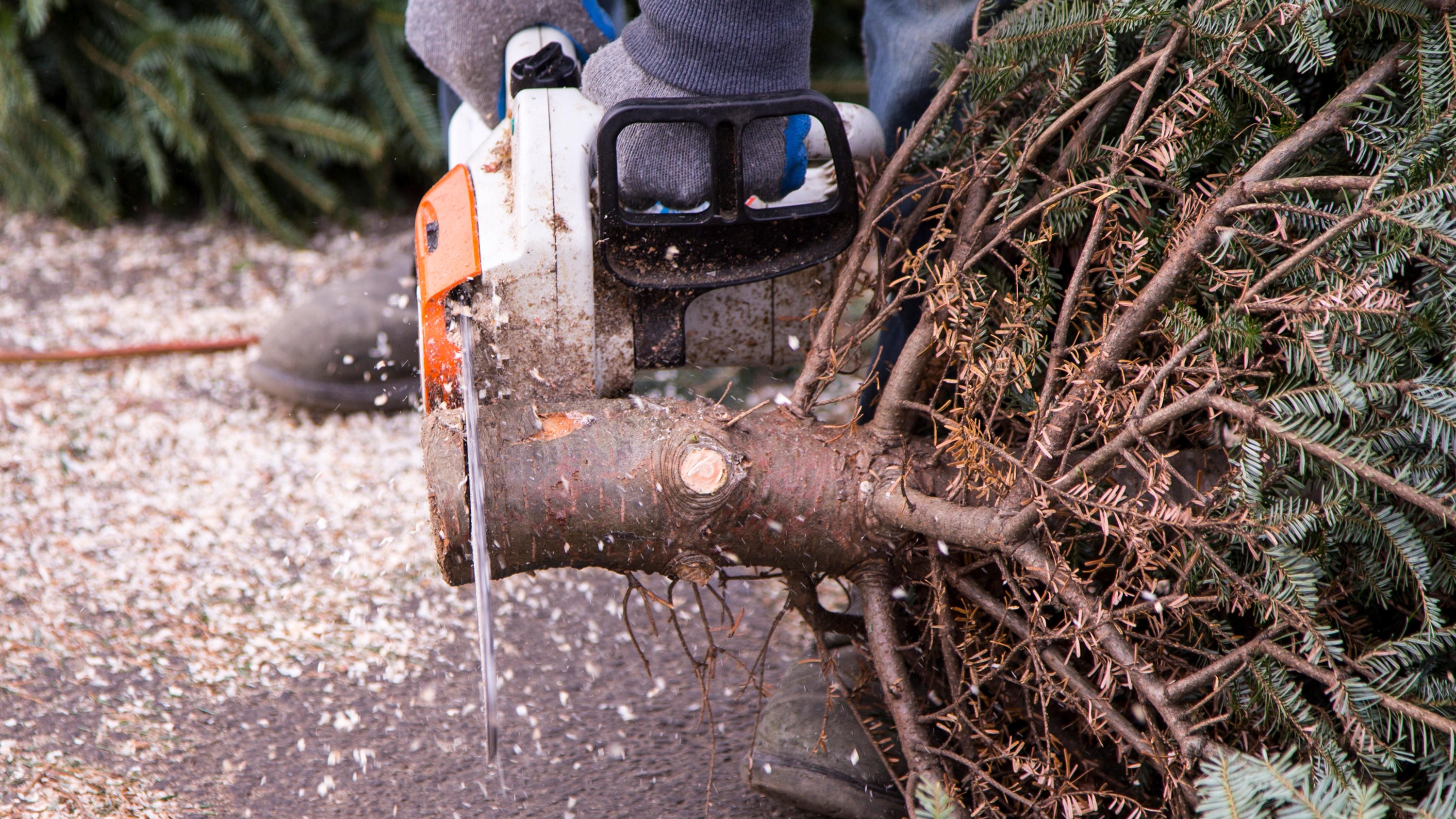
2. Bar length
The length of a chainsaw’s bar determines which tree trunks, branches or logs it is suitable for cutting. So, before you buy a chainsaw, measure the wood you need to cut, and check whether your chosen chainsaw has a bar length greater than the width of the wood.
If you’re only going to do light cutting-back with your chainsaw, then a chainsaw with a relatively short bar (e.g. 12 inches or less) should suffice. If you’re a suitably qualified user and your plan is to fell small trees or remove thick branches, then you should be looking at a longer bar length (e.g. 14 or 16 inches).
Professional-grade chainsaw bars sometimes come in ‘Extra Long’ sizes, up to 64 inches and beyond. These lengthy bars are absolutely not intended for the home user.
3. Experience level
We don’t really need to tell you this, but it’s important to emphasize that chainsaws are a very powerful cutting tool, and they can be dangerous if used without proper technique and adequate precautions. If you’re new to using chainsaws, it’s best to start by using the safest and most accessible model you can find.
“Beginners should opt for a small, light saw that they feel comfortable holding and they feel that they could easily control,” says Joe.
4. Intended user (grade)
Not all chainsaws are made equal – so choosing a model that’s designed for a user like yourself tends to be a smart bet.
“There are different grades; professional, semi-pro or homeowner,” says Joe.
“If you're an arborist or forester and you'll be using your chainsaw every day, you'll need a professional grade saw as these are better built but come with a hefty price tag. Occasional use buyers can afford to choose from the lower end of the market.”
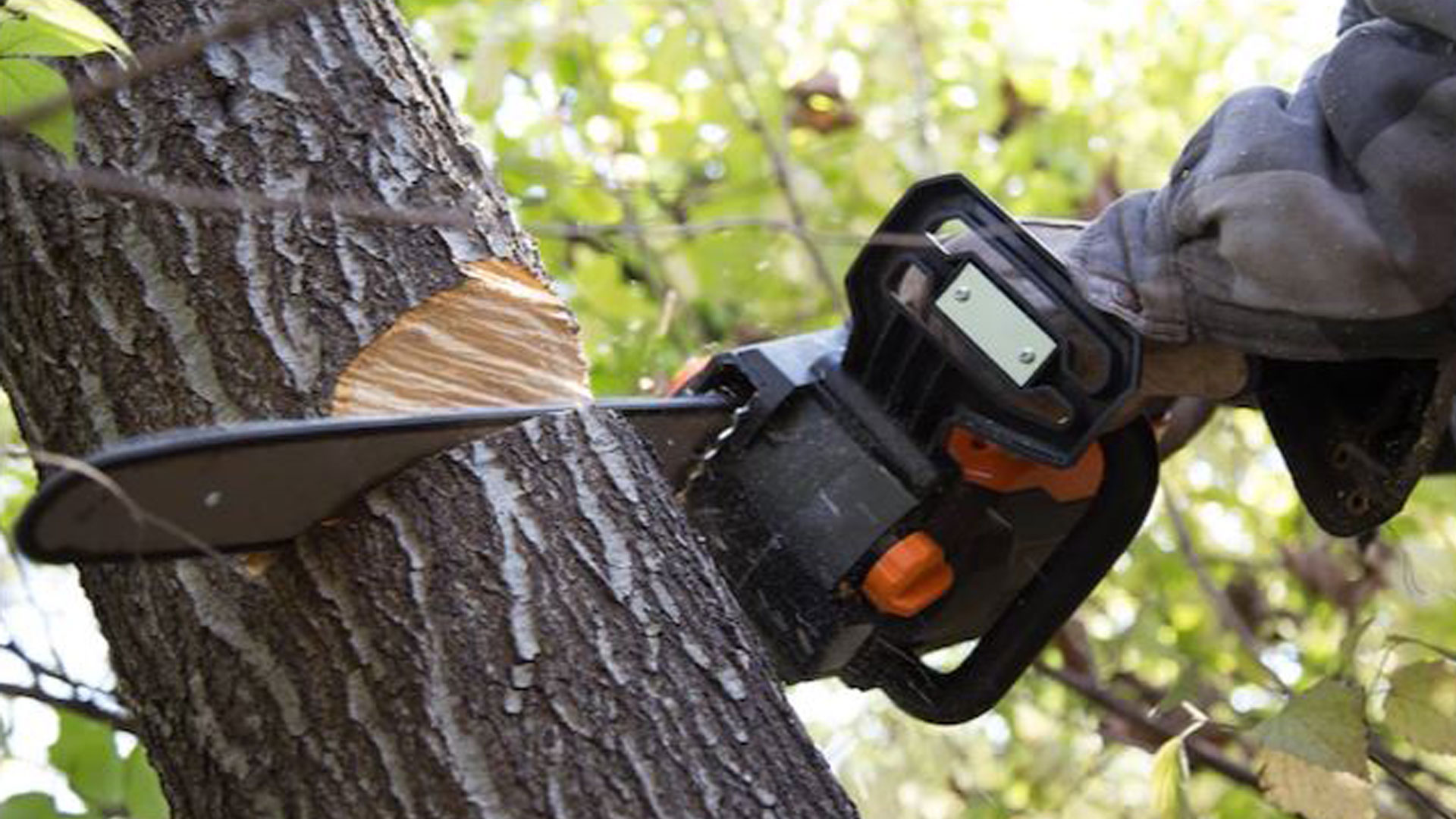
5. Intended use (type of cutting work)
Not all cutting work needs to be done with a chainsaw. For some smaller tasks, one of the best pruners might be more appropriate.
“When you want to make a fine pruning cut to small diameter wood without it tearing, then a pruning saw or secateurs would be a better option than a chainsaw,” says Joe.
“Chainsaws have been designed for cutting thicker pieces of wood, so it’s best to limit them to that specific task.”
For cutting work that falls somewhere between pruning and tree surgery, you might consider using an electric pruning saw. These tools are essentially one-handed mini chainsaws – and I was pleased with the results when I used one of them, the Greenworks 24V 6" Brushless Pruning Saw, to prune thick branches on my fruit trees.
6. Brand
We all have our favored power tool brands, and choosing a chainsaw from a manufacturer you know and trust will usually pay dividends.
“The two big names, Stihl and Husqvarna, make exceptional saws from homeowner through to professional grade,” says Joe.
“However, I prefer to go with the lesser-known brands that still make professional grade saws. Makita, Echo and Jonsered make fantastic saws and tend to be a little cheaper.”
Meanwhile, as a home user, I’ve had good experiences using cordless electric chainsaws made by Greenworks and Ryobi.
On that topic, if you decide to buy a cordless electric chainsaw, then you could save money by finding a model that’s compatible with a lithium-ion battery and charger that you use with another power tool from the same range, such as a drill or hedge trimmer. This will allow you to buy the chainsaw as a ‘bare tool’, which is better value than buying the same tool with a battery and charger included.
7. Power output
Chainsaw power output is typically measured in wattage (kw) or horsepower (hp). The higher the kw or hp specification, the greater the cutting power.
Not every task requires a high-powered saw. In fact, for home users, a relatively low-powered tool will do just fine. However, if you’re a professional and you need to work quickly or cut through thick or very hard tree limbs, a high-powered chainsaw is a must-have.
Another variable that determines how much power you need from your chainsaw is the hardness of wood that you’ll use the tool to cut. For example, if you’re going to work on a pine tree, cutting will be much easier than it would be if you were working on an oak.
If in doubt about how hard your trees will be to cut, a good starting point is to look up the Janka Hardness Rating for the relevant species of tree.
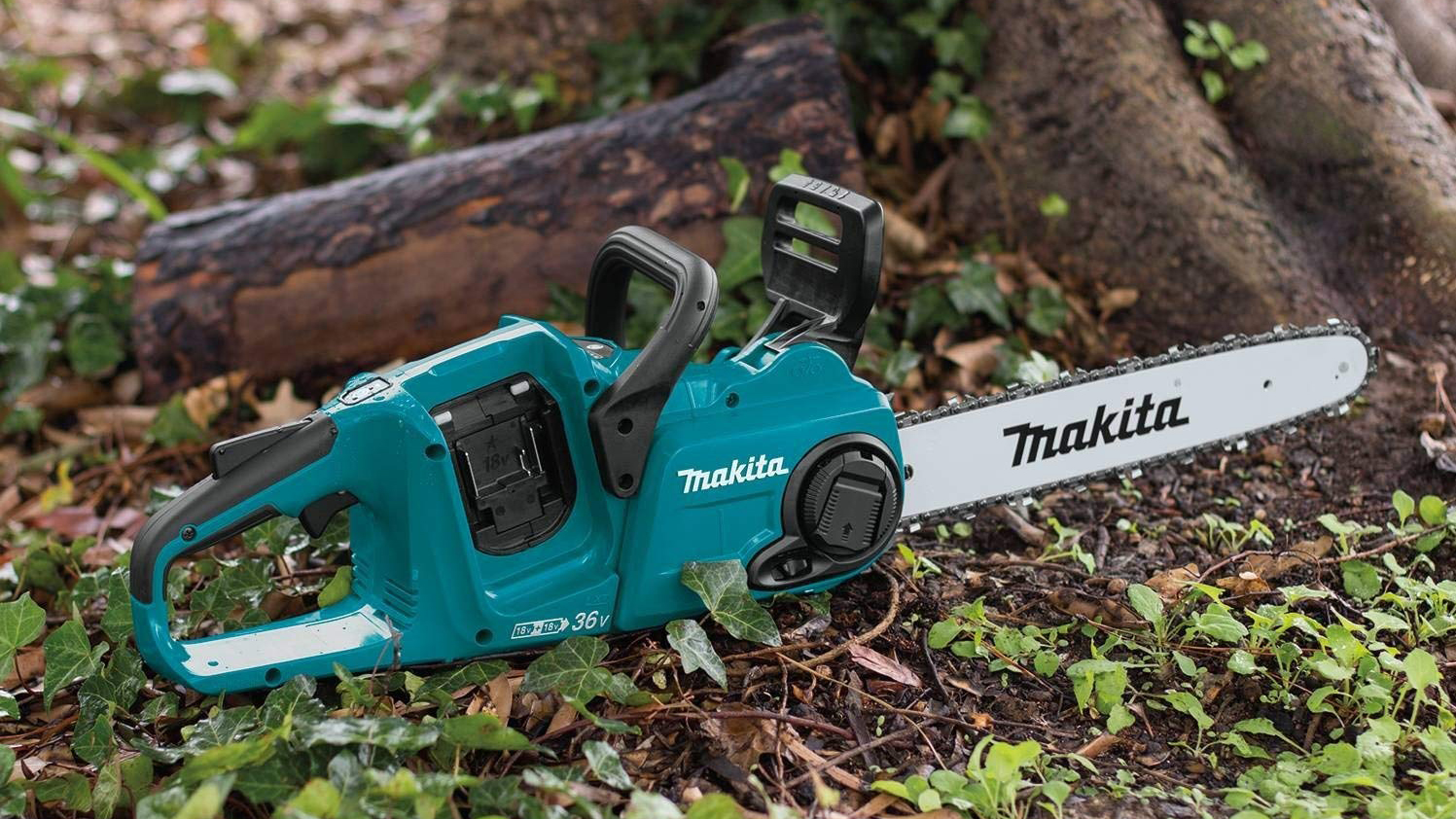
8. Weight
You need to be sure that you’re able to comfortably carry a chainsaw, before you go ahead and use it. Struggling with a chainsaw’s weight will make it difficult to work safely and effectively.
Chainsaws vary greatly in their weight, though most are somewhere between 10 and 20 lbs. A heavier tool will obviously demand more strength and effort, although the load can be effectively distributed across the body using a strap (which often comes included with the tool)..
Usually, the weight measurement given on a chainsaw’s spec sheet is the powerhead weight. The powerhead is the heaviest section of a chainsaw, mainly because it includes the engine (gas) or motor (electric), and the casing.
The liquid fuel or lithium-ion battery that powers your chainsaw will also contribute to the weight you carry, as will the bar and chain (although these cutting components are comparatively lightweight). Cordless electric chainsaws tend to be lighter than gas-powered models, especially if used with a relatively small battery (e.g. a 2.0 Ah battery rather than a 4.0 Ah one).
9. Power-to-weight ratio
On the flipside, it may be less strenuous to hold a heavy-but-powerful tool for a short time, rather than using a lighter and less effective tool for a long time. You can get some idea of which chainsaw will demand more effort overall by looking at its power-to-weight ratio, which is sometimes listed by specialist retailers.
To work out a chainsaw’s power-to-weight ratio for yourself, divide the power (kW) by the weight (lb or kg). The higher the figure, the better.
Do bear in mind that power is not the only factor determining a chainsaw’s effectiveness. For example, the condition of the bar and chain is also important (so keep your chain sharp).
10. Power source
The type of power source used to drive your chainsaw will affect various aspects of your experience, including the tool’s cutting power, ease-of-maintenance, portability and user-friendliness.
“Buyers really have three options: petrol, battery or corded,” Joe explains.
“Battery technology has come on leaps and bounds in the past ten years, and battery-powered saws are generally a lot lighter than petrol chainsaws, although they are less powerful.
“Electric (battery and corded) chainsaws are considered safer, with less hand-arm vibration as there’s no combustion engine rattling away, no fumes to contend with, and much lower noise levels,” he says.
The main advantage to petrol-powered chainsaws is their (generally) superior power, and this may be a deal-breaker for heavy-duty users. However, for most home users, an electric model will be better suited.
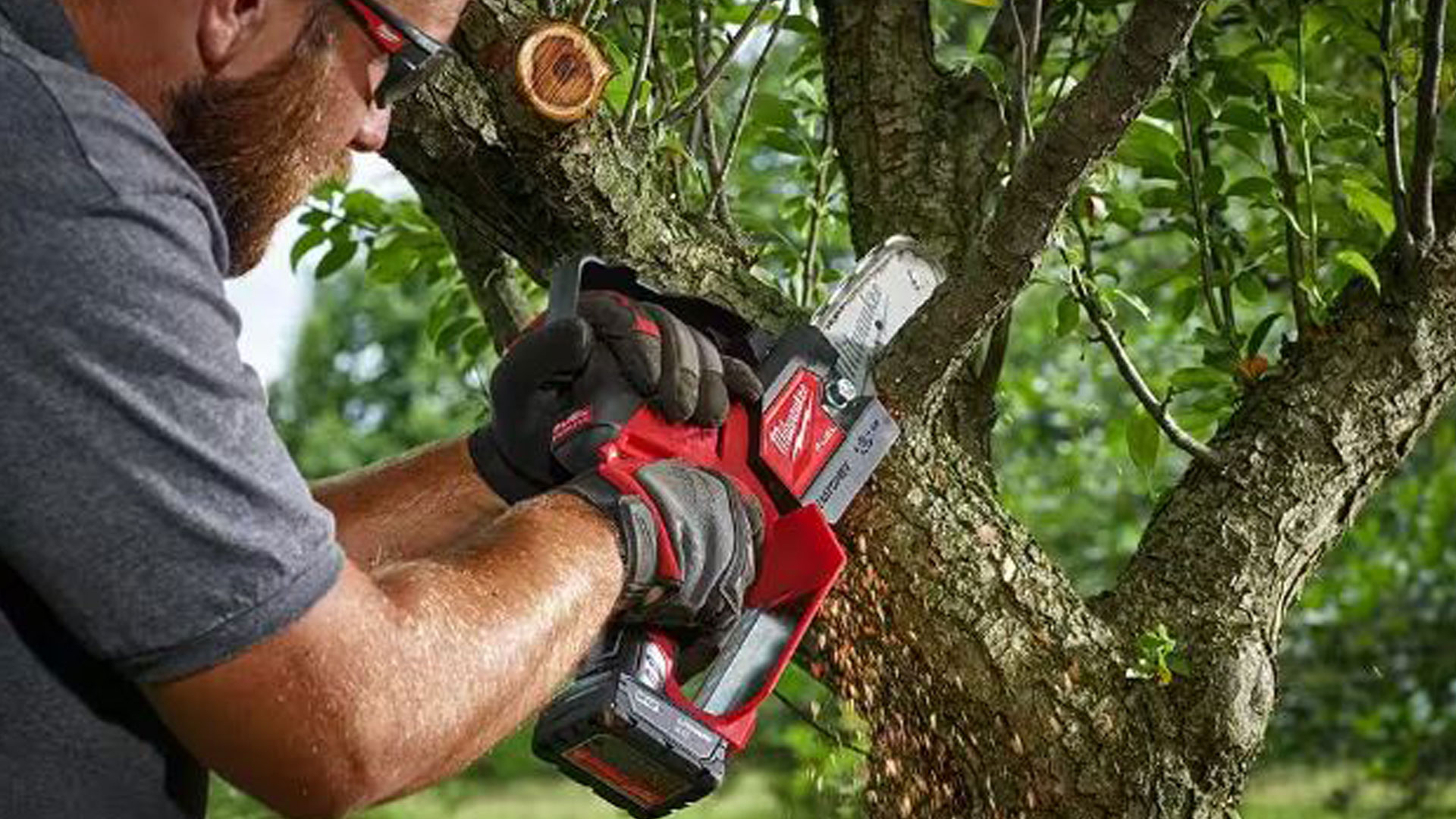
11. Noise levels
The only quiet chainsaw is a broken chainsaw, but we’re glad to say that some models are considerably less noisy than others. You should always use ear protection while using this type of tool – but users with sensitive hearing (or sensitive neighbors) would do well to consider noise levels before purchasing a chainsaw.
In a chainsaw’s product specification (found in online listings and in the manual), the manufacturer will provide a noise measurement in decibels (dB). This measurement is not exactly perfect – it’s based on tests done under laboratory conditions, and while the given ratings describe acoustic volume, they don’t tell you everything about the character of the sound. Nonetheless, it’s a good starting point for comparing noise levels between models of chainsaw.
Usually, electric chainsaws are easier on the ear than petrol-powered models.
12. Optional features
In terms of their features, most chainsaws are pretty similar. Given that these tools require such a high level of focus and control from the user, it’s helpful when they function simply.
With that said, some chainsaws do have stand-out features that you might find helpful. All chainsaws require ongoing maintenance, such as sharpening and oiling the chain – but these chores can be made easier (or largely eliminated) through features such as self-sharpening mechanisms and tool-free chain adjustment.
Optional features are not the most important points to consider when choosing a chainsaw – but factoring in these ‘nice-to-haves’ could help you to decide between closely matched options.
13. Price (and availability of deals)
When deciding how much you should spend on a chainsaw, consider how often you will use the tool. If you’re only going to use your chainsaw rarely, it makes sense to buy a relatively low-cost option. On the other hand, frequent users may benefit in buying a high-quality tool that’s built to last.
Chainsaw prices range from as low as $50 to several-hundred in the US, and from around £40 upwards in the UK. To get a decent-quality model, you’ll probably need to spend a three-figure sum.
With that said, chainsaw prices can tumble like felled timber during seasonal sales – especially Black Friday, which falls at a time of year when folk aren’t thinking all that much about gardening, while tool manufacturers are keen to shift stock ahead of the new year.







